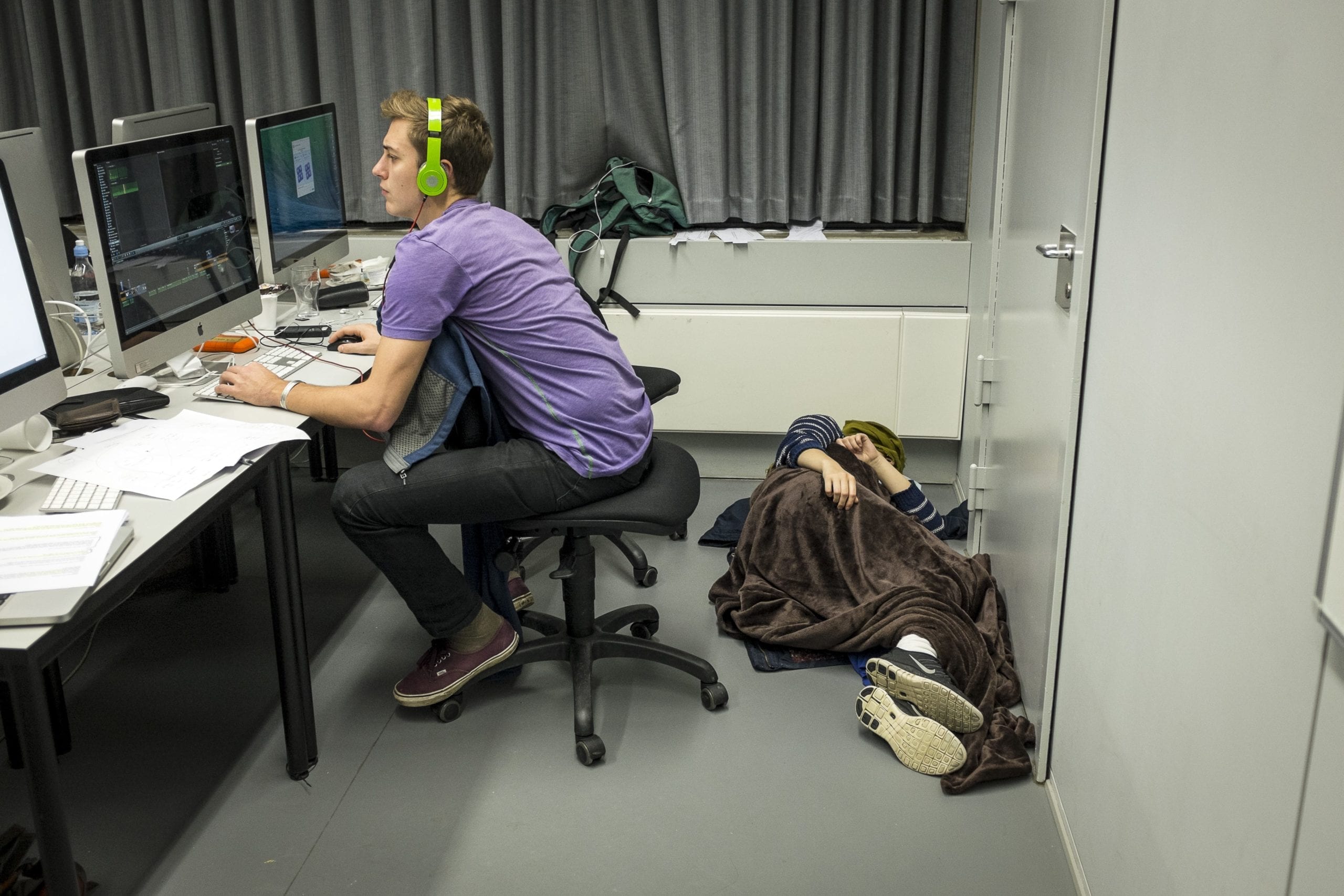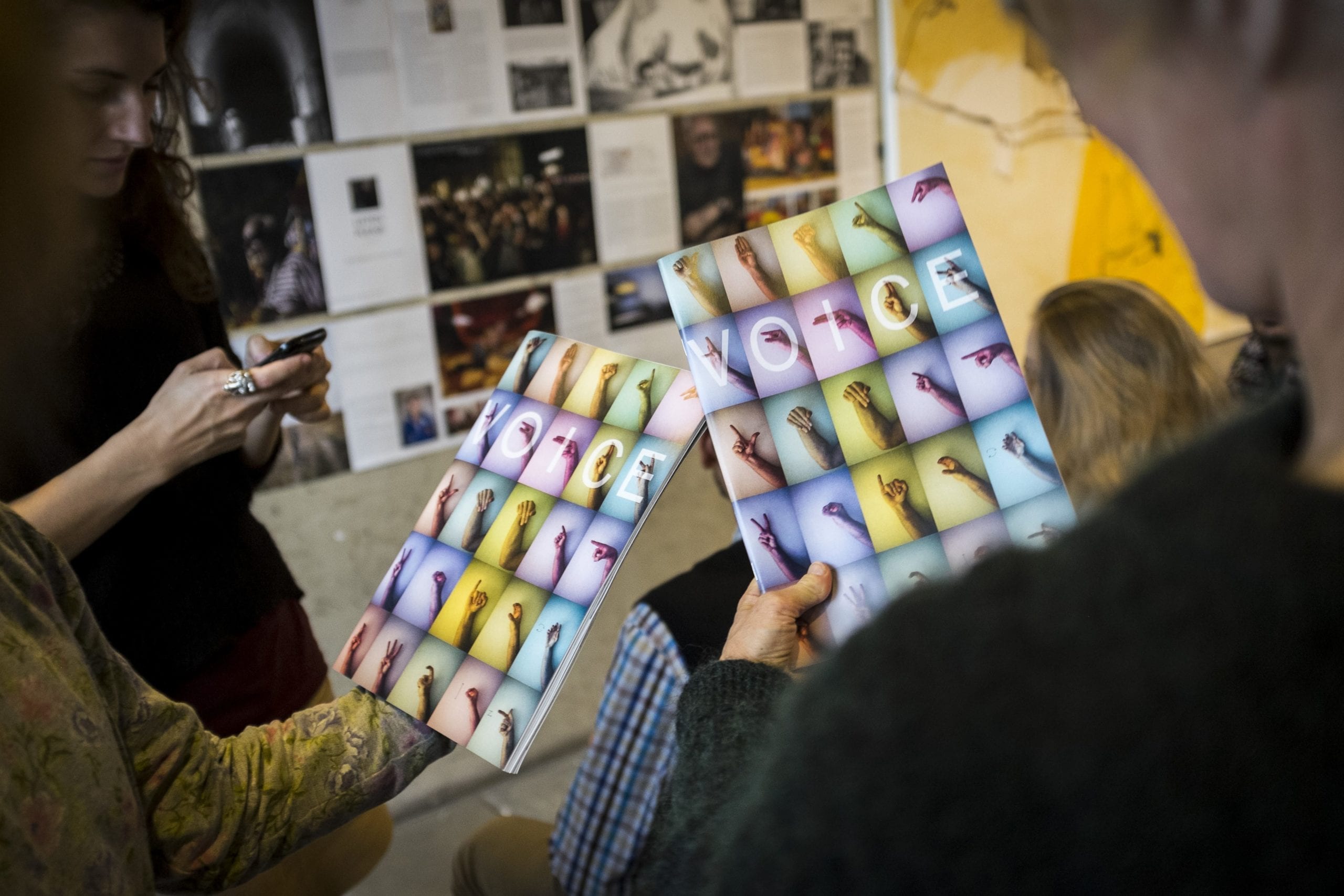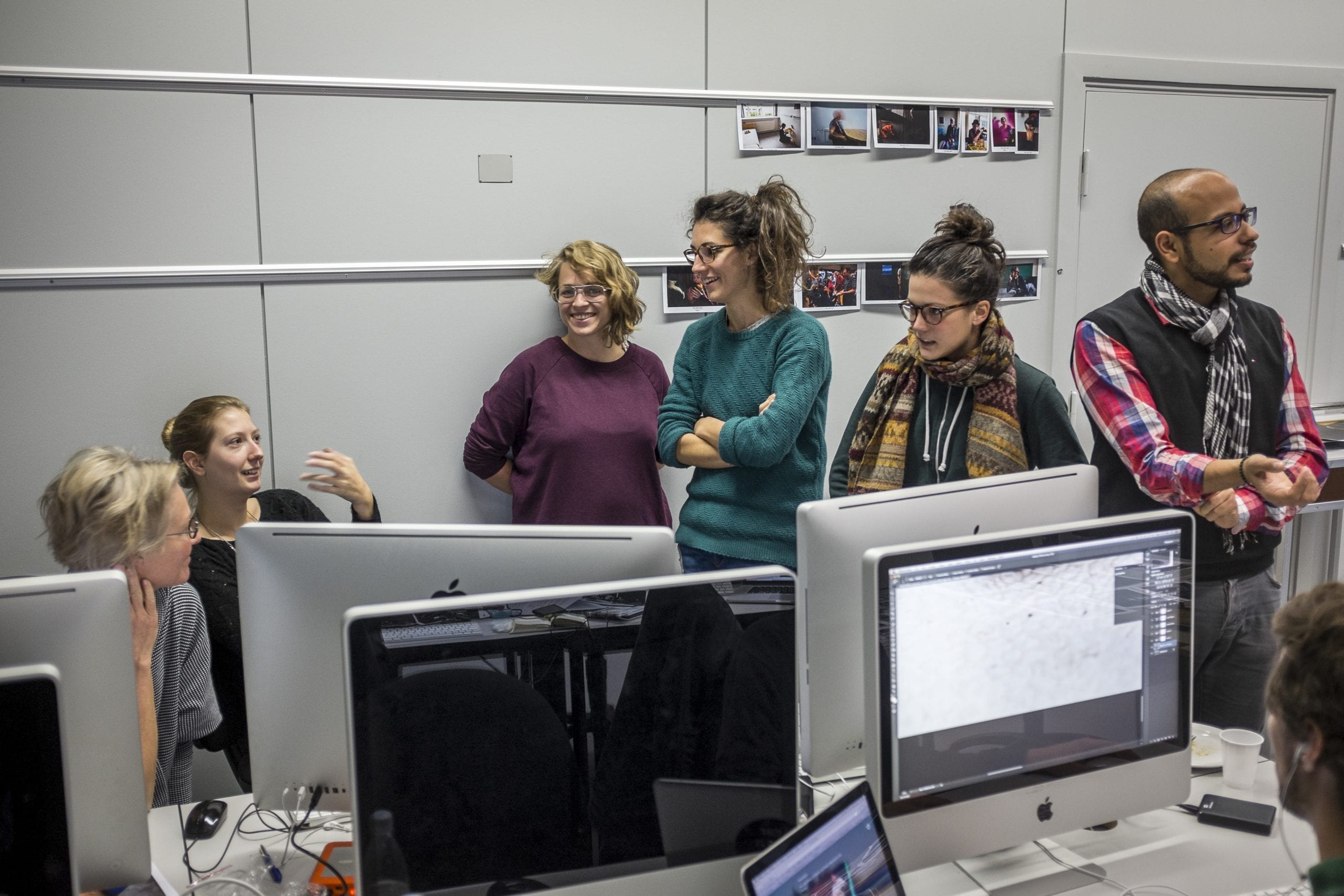Students may also partake of classes and workshops of the BA programme and vice versa. This leads to much cross-fertilization of ideas and the sharing of experiences and contact that serve students well after graduation.
Mario Wezel, who had been studying at the Academy of Fine Arts in Hannover, Germany, describes his experiences in Aarhus during the International programme. “I was halfway through my studies in Hannover, when I felt a lack of inspiration. I realised I had to … get some new inspiration and get to know new angles in photography. During my time in Hannover I had seen the work from DMJX graduates such as Mads Nissen and Thomas Lekfeldt, and I was just stunned by the intensity of their work. They had amazing compositions but were still so close to the story and to the people. I thought, “What a beautiful way of learning about the world.”
He adds, “Quite early on when, we would discuss or propose stories that we wanted to do, the teachers would always ask us ‘why?’ “Who this or what is the story? Why me and not someone else. It led to discussions that helped us students realise what the actual story within a bigger story could be and how we as individual photographers could work on it.” It also drove them to seek out stories that motivated them and even demanded their stories be told.
Two other German students concur entirely about the personal emphasis on passionate story telling they felt in Aarhus that was missing in their schools.
Maria Feck: “Our main teacher was Kent Klich. He is an amazing teacher. He was taking a lot of time for each student, taking the projects and ideas seriously. I learned to relate to my personal motivation for the projects, what is the essence, what do I have to do with this project. I learned to find the essence of my approach to a topic and how to feel it. What I take with me from studying in Aarhus is an open-minded approach to new projects. What I found most telling was that I learned not to censor myself, trying to look for the emotions in my pictures to see what can I feel in the photographs … and also thinking in a more conceptual way and don´t try to explain too much.” Now a freelance photographer for various German magazines, Feck comes away with the sense of the gift the International programme gave her: “I learned in Aarhus, not to loose the personal passion for photography and keep on doing my own projects.”
Jasper Batian adds, “I had the chance to continue on my project “Across the River” throughout the course of both classes and was provided with constructive feedback from various photographers and also editors. The school helped me to shape my vision and supported me in continuing the project. Sören Pagter and Mads Greve are challenging each student to find their own personal voice and develop their visual style. You never feel restricted in ways of expressing your story, and have rooms for visual experiments, which might not be typical at other universities of photojournalism.”
For Claudia Gori just how important the environment of passionate sharing at the school was to her personal and professional development is immediately clear. “What I’ve also realised,” she writes,” is how important is to make myself the right questions before starting a photographic project. The programme pushes you to answer why you want to tell a certain story and what makes you really committed to that, taking the full command of your potential. That’s something that I’ve never thought about, but it’s actually what makes you an honest photojournalist.”
This is a great departure from the classically pedagogical approach used in schools as far apart as those in the United States and Germany. Of course, the school in Aarhus, by virtue of its reputation and size, can take a more intimate approach than bigger schools.
There are other aspects that make the Danish approach more successful than elsewhere. Lasse Bak Mejlvang, a recent graduate of the BA programme, points out that the school does not clone its students. Teachers are rotated through, yet they are able to maintain contact with their students over time. “The long-term internships with newspapers also gave me the time to get into the mood of the stories I wanted to tell.”
Meljvang says this enabled him to “spend an amazing time in the Philippines and in Mozambique. I followed Kosovar Albanian who had been a refugee here in Denmark who was illegally deported after living in Copenhagen since he was two. He had been traumatised during the war and was psychologically traumatised. It was an amazing story, and through the support of Politiken’s photography editor, the late Per Folkver, who had sponsored my internship, we managed to get him returned to Denmark.”
The passion Mejlvang brought to this story and others from Greenland and Denmark is telling. One can see it immediately in his photographs. Even before graduation his work had been published internationally.
Like his fellow students, Mejlvang was motivated from the start, but the environment that Søren Pagter and Mads Greve have created and nurtured has encouraged their students to bring out the best in their work. He summarises his thoughts this way: “What we learned was ‘to get naked,’ to show everything we were feeling and seeing in the story, and to tell it as intensely as possible the best way we can.”
Learn more about The Danish School of Media and Journalism here.




